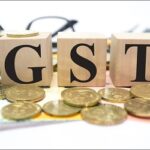1. About Income tax assessment under section 143(3)
Assessment under section 143(3) is a crucial process known as scrutiny assessment that plays a significant role in the tax compliance system in India. This assessment is carried out to ensure that the taxpayer has accurately declared their income, losses, and tax liability.
During scrutiny assessment, the tax authorities conduct a detailed examination of the taxpayer’s return of income to verify the accuracy and authenticity of their claims, deductions, and other information provided in the return. The objective is to ensure that the taxpayer has not understated their income or computed excessive losses, or underpaid tax in any manner.
During the assessment process, the taxpayer or their representative presents their arguments and supporting evidence to the Assessing Officer. The officer verifies the evidence and takes into account any other material relevant to the assessment. The assessment under section 143(3) is a critical process that every taxpayer should be aware of to ensure compliance with the tax laws in India. It is essential to maintain accurate records and provide supporting evidence for any claims made in the tax return to avoid any discrepancies during the scrutiny assessment process.
2. Service of Notice under section 143(3)
Under Section 143(2), the Assessing Officer is required to issue a notice to the assessee to initiate scrutiny assessment. This notice must be served within three months from the end of the financial year in which the return was filed.
Once the notice is served, the Assessing Officer will examine any evidence provided by the assessee and consider all relevant materials gathered during the assessment. Subsequently, the Assessing Officer will issue an assessment order in writing, determining the total income or loss of the assessee, and the amount payable or refundable on the basis of the assessment.
3. Selection of Scrutiny Cases under section 143(3)
The process of scrutiny assessment can be applied to every return of income in theory, but in practice, it is only applied to a small percentage of returns. In the past, scrutiny assessments were done in every case, but as the workload of the Income Tax Department increased, the criteria for selection evolved. Initially, returns showing income above a certain amount were scrutinized, and then returns were picked at random. Nowadays, returns are mostly accepted without scrutiny, and only a small percentage of cases are selected through a computer-assisted scrutiny selection process (CASS) or based on information about income concealment.
Cases, where income has escaped assessment, can be reopened within three years from the end of the relevant assessment year under section 143(3) of the Income Tax Act, even if they were previously subject to scrutiny assessment. This process requires following proper procedure and approval from higher authorities to ensure fairness.
It is important to note that assessments made under section 143(3) are crucial in determining the total income or loss of the taxpayer and the sum payable by or refundable to the taxpayer based on the assessment order. Proper adherence to the selection process and due procedure ensures fairness and accuracy in the assessment of taxpayers.
4. Purpose of assessment under section 143(3)
The primary purpose of scrutiny assessment is to ensure that the income, losses and taxes paid by the assessee are accurately reported. During the assessment process, the assessing officer conducts necessary enquiries to ascertain whether the income has been understated, losses have been excessively computed, or tax has been underpaid in any manner.
Additionally, the cases involving searches, surveys, and enquiries ultimately result in scrutiny assessments to determine the taxable income and tax liability of the concerned individuals and entities. While framing the assessments, all relevant financial transactions gathered through search, survey or enquiry are analyzed thoroughly to determine the accurate taxable income. The assesses are given an opportunity to present their case and contest the findings of the enquiry. The process for completing the scrutiny assessment in these cases is the same as for returns selected for scrutiny assessment.
5. Procedure of assessment under section 143(3)
When an income tax return is selected for scrutiny, the assessing officer issues a notice under section 143(2)(ii) of the Income Tax Act within three months from the end of the relevant financial year. The taxpayer is required to produce evidence, including books of accounts and other documents, to support the income declared in the return. Additionally, the assessing officer may request further information and details to verify the accuracy of the income declared and the expenses claimed.
During the scrutiny assessment, the deductions claimed are verified, and any information related to investments, expenditures, or other financial transactions is cross-checked with the income tax return. The assessing officer may also conduct inquiries to verify the facts stated in the return of income.
To fully examine the financial affairs of the taxpayer for the relevant financial year, the assessing officer may request information such as
- bank statements,
- credit card statements,
- investment details,
- proof for claimed deductions and expenditures,
- details of business expenses,
- creditor and debtor information,
- details of loans and gifts, and
- reconciliation of income with TDS certificates,
- others.
The list of information requested is not exhaustive, and the assessing officer may ask additional questions based on the specifics of each case and their ability to probe meaningfully.
6. Consequences of Failure to comply with Notice for Scrutiny Assessment under section 143(2)
If a taxpayer fails to comply with the notice for scrutiny assessment under section 143(2), it may lead to an ex parte, best judgment assessment under section 144. Additionally, the failure to comply may result in a penalty under Section 271(1)(b), which has a fixed amount of Rs. 10,000.
7. Time Limit for Scrutiny Assessment under section 143(3)
According to Section 153, the time limit for assessing income under Section 143(3) is as follows:
- If the assessment year is 2017-18 or earlier, the assessment must be made within 21 months of the end of the assessment year in which the income was first assessable.
- If the assessment year is 2018-19, the assessment must be made within 18 months of the end of the assessment year in which the income was first assessable.
- If the assessment year is 2019-20, the assessment must be made within 12 months of the end of the assessment year in which the income was first assessable.
- If the assessment year is 2020-21, the assessment must be made within 18 months of the end of the assessment year in which the income was first assessable.
- If the assessment year is 2021-22 or later, the assessment must be made within 9 months of the end of the assessment year in which the income was first assessable.
8. FAQs on Income Tax Scrutiny
Here are some frequently asked questions (FAQs) on income tax scrutiny:
Q: What is income tax scrutiny?
Income tax scrutiny is a process where the tax department examines and verifies a taxpayer’s tax return to ensure that the taxpayer has correctly reported their income, claimed deductions, and paid the correct amount of tax.
Q: How is a taxpayer selected for income tax scrutiny?
A taxpayer can be selected for income tax scrutiny either through a computer-aided selection process based on risk parameters or through manual selection by the tax officer.
Q: What are the documents required for income tax scrutiny?
The documents required for income tax scrutiny depend on the type of scrutiny. Generally, the tax officer may ask for documents such as bank statements, purchase and sale bills, rent receipts, and other documents related to income, expenses, and investments.
Q: What is the time limit for completing income tax scrutiny?
As per the Income Tax Act, income tax scrutiny should be completed within 6 months from the end of the financial year in which the tax return was filed. However, in some cases, the tax officer may take longer time to complete the scrutiny.
Q: What happens after income tax scrutiny is completed?
After income tax scrutiny is completed, the tax officer may accept the tax return as filed or may issue a notice of demand for additional tax, interest, or penalty if any discrepancies or under-reporting of income are found.
Q: Can a taxpayer appeal against the income tax scrutiny order?
Yes, a taxpayer can file an appeal with the Commissioner of Income Tax (Appeals) against the income tax scrutiny order within 30 days of receiving the order. If the taxpayer is not satisfied with the decision of the Commissioner, they can file an appeal with the Income Tax Appellate Tribunal.
We welcome you to contact us at mail@nbaoffice.com to discuss the notice and explore options for resolving it. Our team is available to provide guidance and support to help address your concerns.







